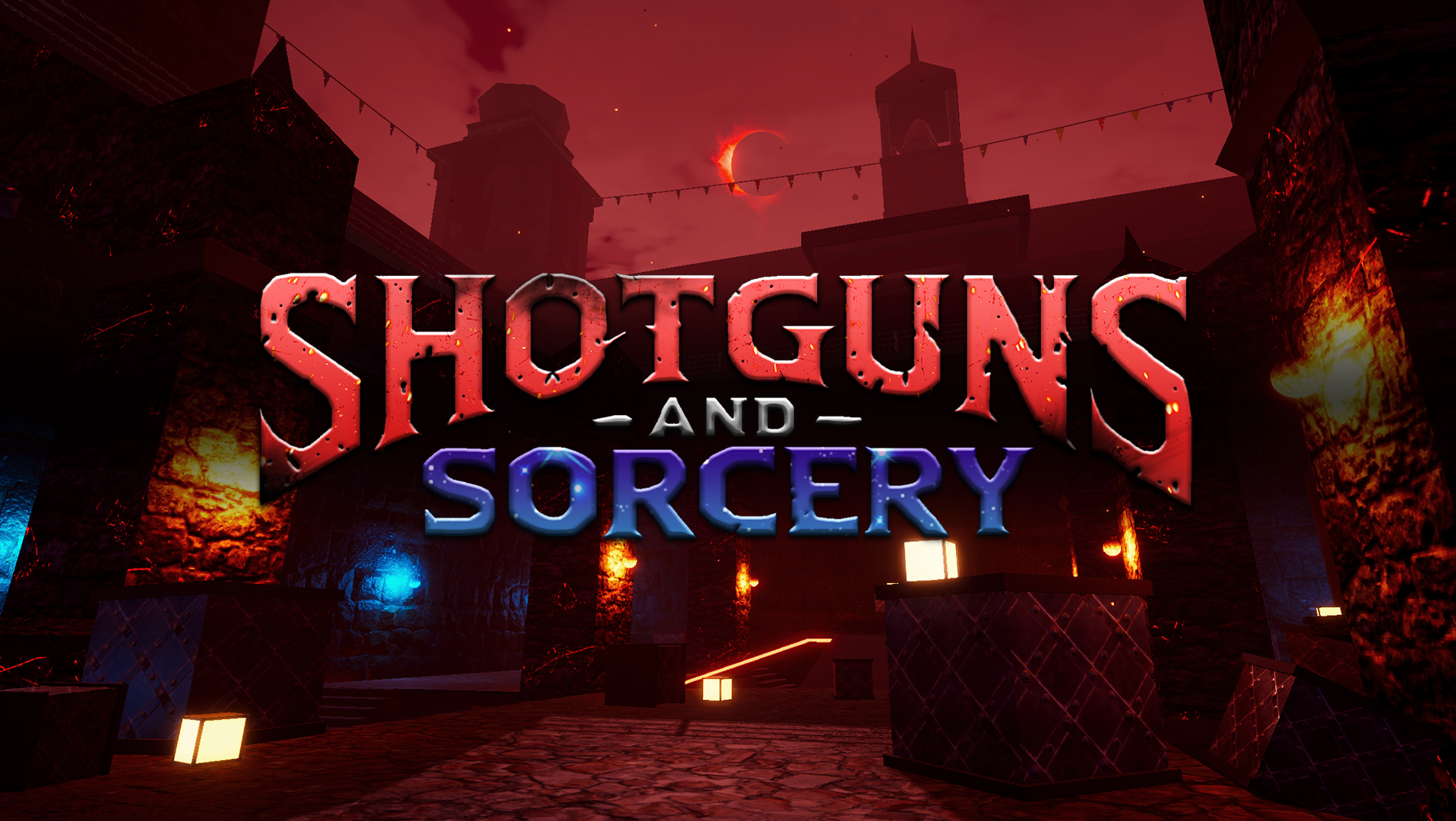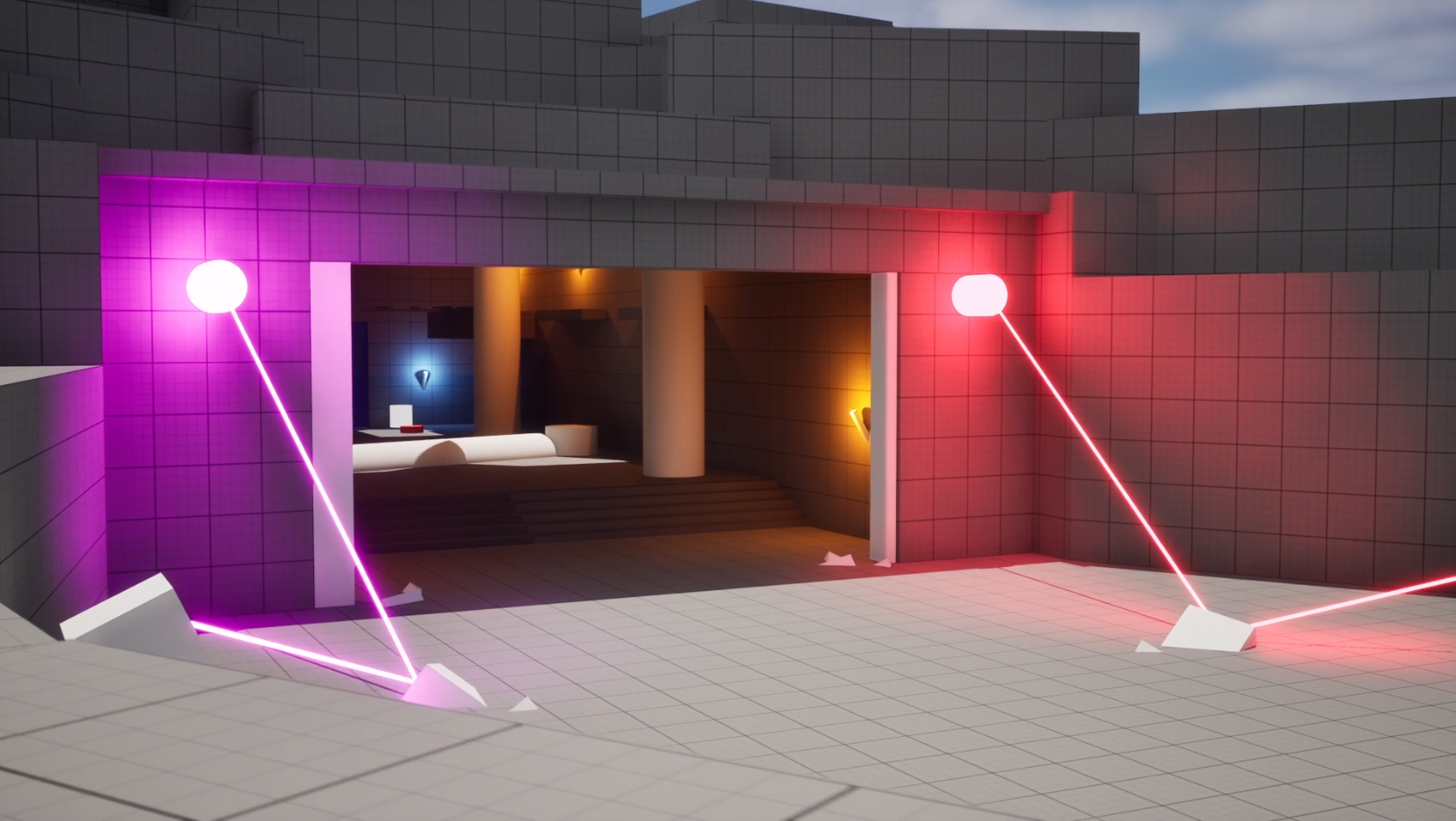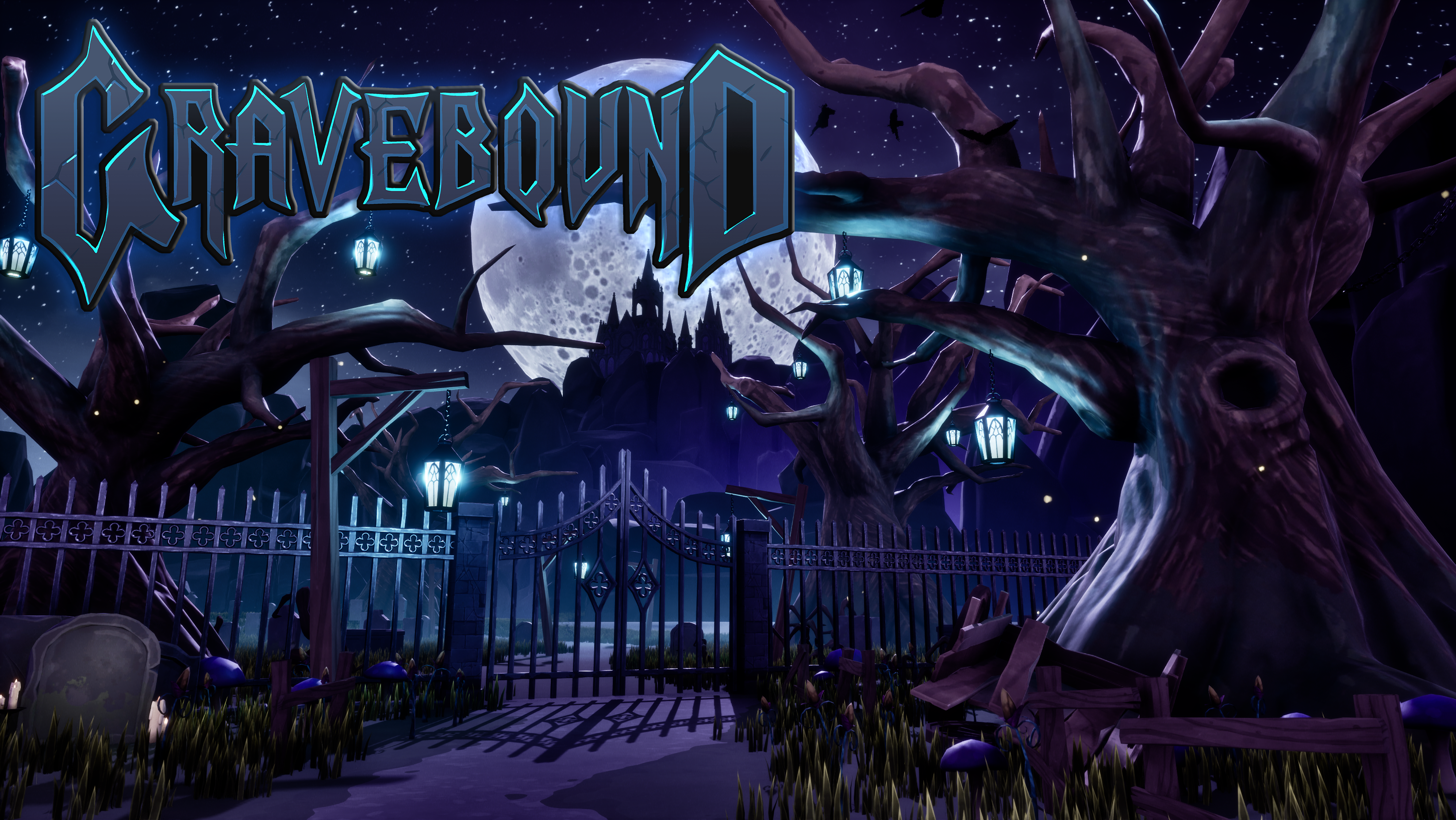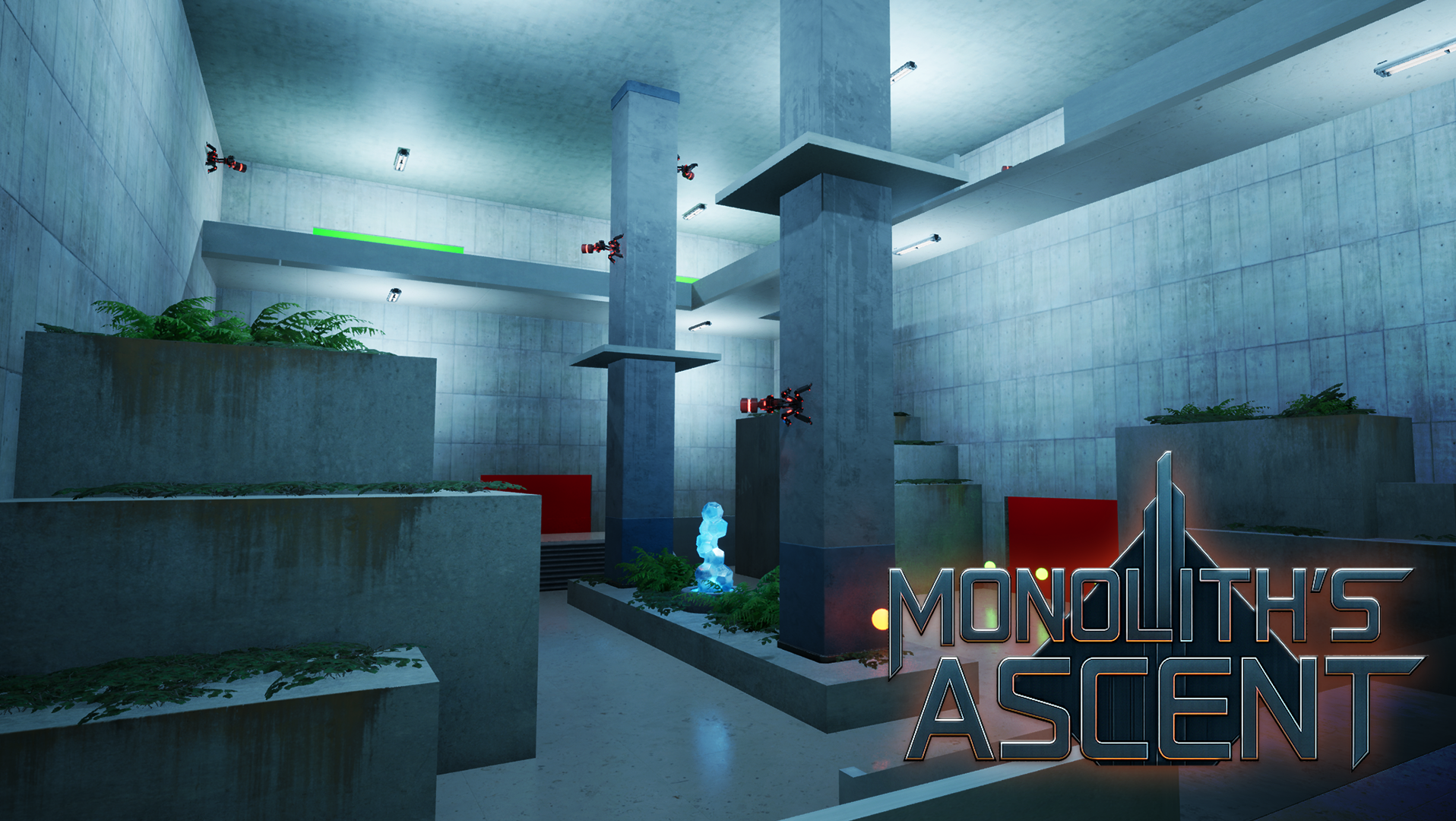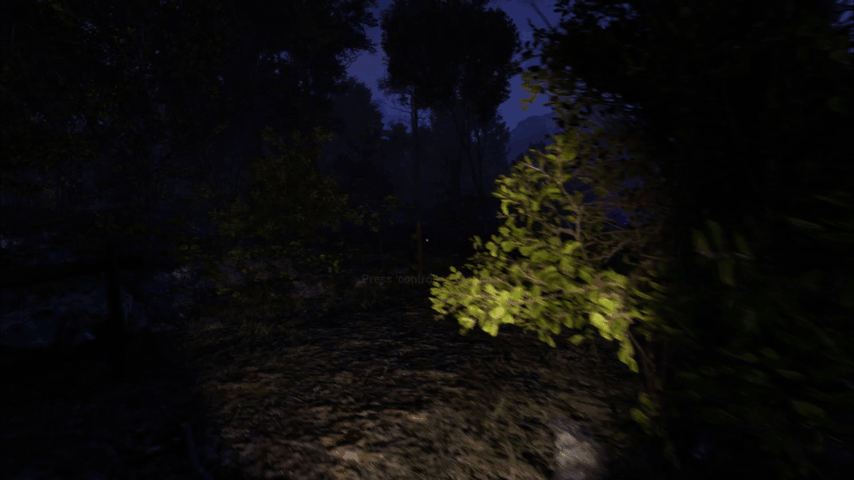

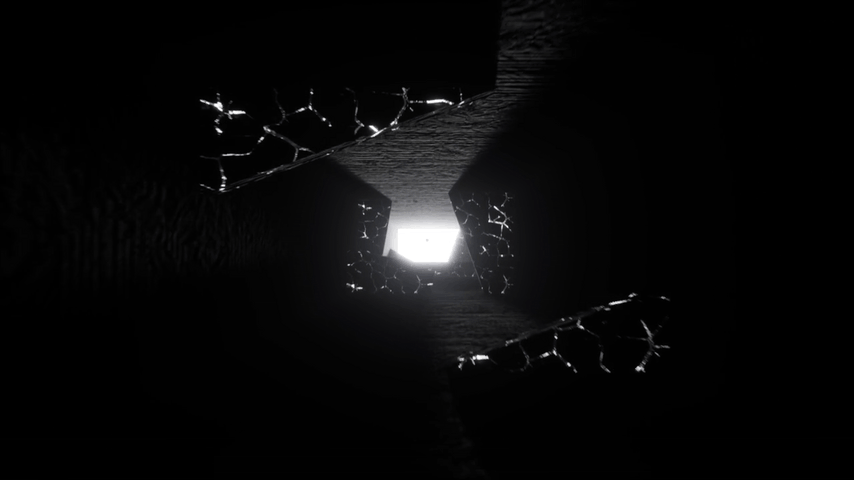
PROJECT OVERVIEW
A horror-puzzle game where light is both your tool and vulnerability. Players investigate a fallen meteor during a peaceful forest retreat, quickly forcing the player into a dark, nightmarish world with one objective: find a way out.
Main Gameplay Features:
- Light-Based Stealth: avoid enemy detection by limiting light usage and staying in the dark
- Two major puzzle sequences that are integrated into the world context and overarching narrative
- Atmospheric tension building and storytelling through trigger events, visual landmarks, and environmental clues
Full Playthrough Video


PROTOTYPING AND DESIGN PHILOSOPHY
I started by experimenting and planning all of the primary game mechanics that would be used in the game. My primary design philosophy for this project emphasized:
- Creating event and audio-driven tension without relying on cheap jump scare events.
- Each primary section would build on systems and mechanics and provide unique twists, preventing stale gameplay.
- Puzzles that are built into the environment, making the player think critically through environmental clues to solve sequences.
- Unpredictable enemy encounters and AI behaviors that leave the player on edge.
Level Mechanics Sandbox Video
CORE SYSTEMS
AI ENEMIES AND BEHAVIOR
Base Enemy Type
Players needed a persistent threat that punished careless light usage without feeling unfair or overly aware. Fully scripted enemies would be too predictable; fully random would feel chaotic and non-immersive. The AI needed to create tension through their presence while allowing players to avoid and strategically escape encounters.
Consumed Substratum (Section 3) Enemy Type
During the final section of the game (Section 3), the player encounters a new type of enemy in a pitch-black environment.
- This enemy does not move unless the player uses their recently acquired Pulselight Device. Once used, these enemies would start to move around for a set amount of time before stopping and becoming inactive.
- Players must use directional audio to determine if there are enemies nearby. This forces the player to balance navigating the environment efficiently and drawing attention from this enemy type.

Enemy Behavior Blueprint
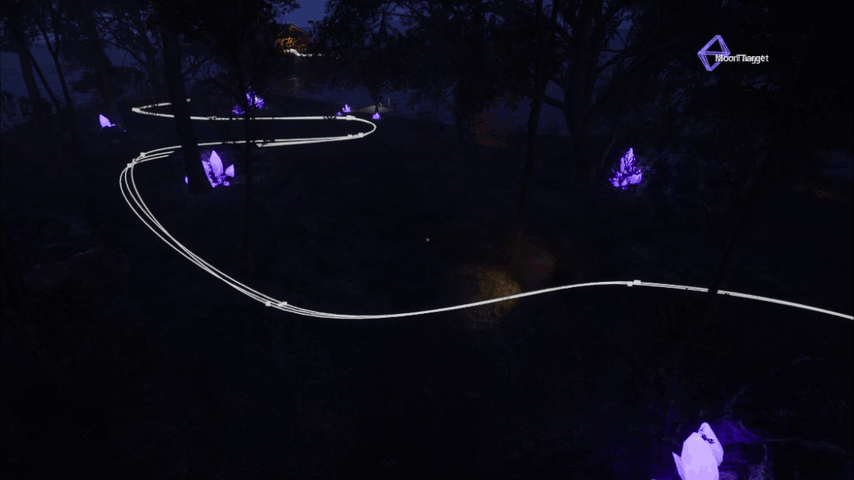
Enemy Patrolling
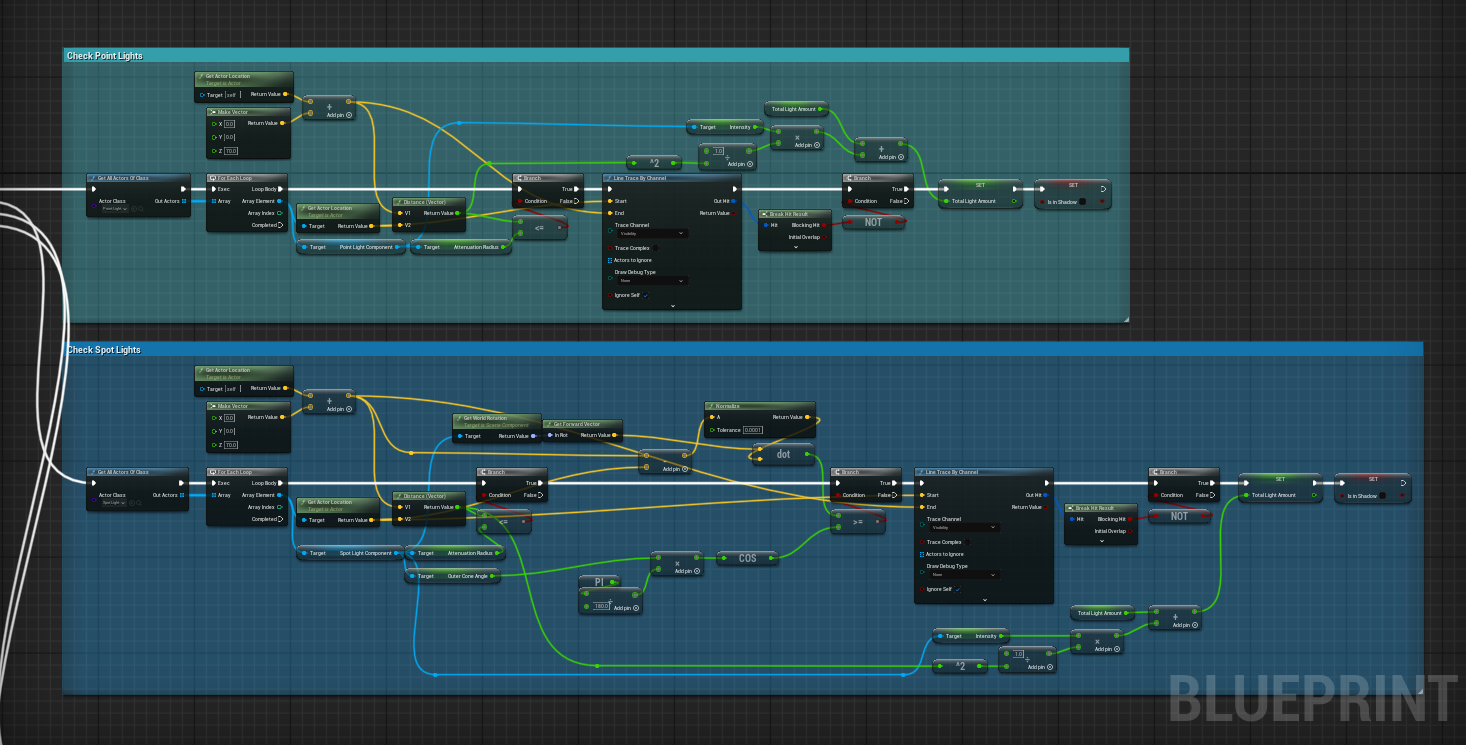
Detecting Players in Light Blueprint
STEALTH AND LIGHT DETECTION
In this game, light is used as a hazard, rather than a safe zone, as enemies detect players standing in light. Players needed to constantly stick to the shadows and manage their flashlight usage to avoid being hunted by enemies.
- Flashlight emits detection radius (8.5m range, 35° spread)
- Enemies have vision and can notice the player when in light or when using their flashlight (8m range, 55° FOV). Vision range can adjust depending on the state of the player.
- When the player is standing in the attenuation radius of light sources, a check is done to see if the player is within casted shadows. If the player is not concealed in shadow, detection from enemies builds quickly over 2 seconds as the player is in the light.
- When illuminating an enemy with the flashlight directly, they become alerted instantly, causing a chase.
FLASHLIGHT MANAGEMENT
Player's Flashlight
The flashlight is a basic, but necessary piece of equipment, used to navigate through the dark, but it can draw unwanted hostile attention. I designed the flashlight in a way that was as detrimental as it is helpful to the player, forcing players to be mindful of how they are using it.
- Enemies will investigate light sources coming from the flashlight's position if seen
- The player must balance flashlight usage between navigating a very dark environment and alerting nearby enemies. Having the flashlight on at all times would most certainly draw enemy attention.
Flashlight Demo
Pulselight Device
When the player reaches the final section of the game, their flashlight is stripped away from them, trading it for a Pulselight Device.
- Briefly flashes and illuminates the environment.
- After use, it has to recharge and goes on cooldown (recharges after 3 seconds).
- When used, enemies are stirred by the light, causing them to become more active.
- Must be used to ignite key pedestals, forcing interaction with the enemies by making the player use it for this section of the game.
Pulselight Demo
TIME-SENSITIVE PUZZLE SEQUENCE
This puzzle sequence is the final test of the game. It is designed to push the player to conquer the dark, plan a perfect route, and avoid the enemies wandering the area, all while under a time constraint. The player needs to use their Pulselight Device to ignite 6 pedestals around the area in order to escape.
- Players are forced to use the Pulselight to ignite the pedestals, causing themselves to become temporarily exposed to patrolling enemies.
- Pedestals further from the central room remain lit for longer
- Players are provided with hints and a map of the area, helping them plan their route and giving them a clear idea of the task ahead
- Players can ignite the pedestals in any order, but igniting further ones first is always better
- Failure does not reset enemy positions or timers (players have to adjust to enemy positioning)

Pedestal Timer Blueprint

Door Win Condition Check Blueprint
LEVEL BREAKDOWN
PRE-PRODUCTION, PAPER MAP, AND REFERENCES
My primary design goal was to maintain an immersive, tense atmosphere using visuals and SFX for storytelling enhancement. I focused on teaching mechanics through environmental clues while balancing guidance with exploration.
I primarily drew inspiration from Alan Wake 2 and Outer Wilds' forests, both of which utilize darkness and limited UI with environmental audio to build tension. For the final section, I referenced SCP-106's limbo dimension and Destiny 2's Salvation Edge for geometric, alien architecture, contrasting the natural forest environments.
Original Level Papermap
Level Reference Sheet
LEVEL WHITEBOX AND GREYBOX
Whitebox Phase
I translated my paper map into a fully playable 3D level, implementing all necessary gameplay features, and letting players experience the game from beginning to end. My key focus was establishing performance-conscious foundations by optimizing foliage assets with LODs, culling, and strategic sightlines for the foliage-dense environments. Core mechanics, puzzles, and scripted events were implemented with placeholder assets followed by playtesting feedback.
Greybox Phase
Following initial playtests, I refined the level through iterative improvements. I replaced placeholder geometry with more detailed assets, fully implemented all audio systems, and conducted multiple lighting passes for atmosphere and player guidance. This phase finalized the layout, refined the difficulty, and incorporated player feedback.

Starting Section Whitebox (brightened for visibility)

Starting Section Whitebox 2 (brightened for visibility)

Section 2 Whitebox (brightened for visibility)

Section 3 Whitebox (brightened for visibility)
FINAL PASS (ART / POLISH)
In this final pass, environment art received detailed treatment across all sections with higher-quality assets, lighting enhancements, and other minor adjustments to perfect the horror theme. I did additional audio and visual passes, ensuring the entire experience was interesting and left the players on edge.
Based on playtest data, I adjusted the difficulty to eliminate frustration while maintaining the intended puzzle challenges. Environmental guidance was enhanced through directed lighting and asset placement, ensuring clear progression without compromising on my design goal of naturally implementing the puzzles into the environment.

Starting Section Final

Starting Section Final 2

Section 2 Final

Section 2 Final 2

Section 3 Final

Ending Sequence Section Final
CHALLENGES AND SELF REFLECTION
My primary challenge was balancing the difficulty of the puzzles. During playtests, players struggled to progress past section 2 due to puzzle solution confusion and excessive enemies. Additionally, the final section's timer mechanic wasn't effectively communicated, frustrating players when progress reset unexpectedly.
To fix these problems, I adjusted and refined puzzle sequences, reduced enemy spawns, and implemented interactive notes providing thematic clues and illustrations. For the timer issue, I added a collectible note explaining the mechanic with an area map while extending timers, which resulted in significantly reduced frustration and allowed players to consistently get past that section. Multiple playtesting iterations were required to balance effective clues without explicitly explaining what the solutions were.

